What is the Importance of an Efficient HVAC System in the Cleanroom?
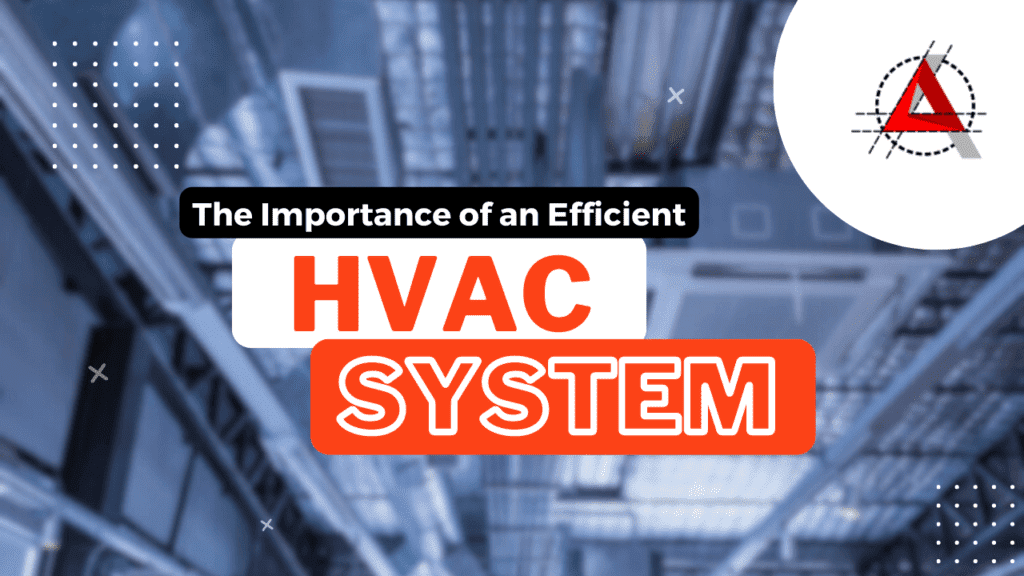
Basic HVAC System Principles
Heating, Ventilation, and Air Conditioning (HVAC) systems are the heart of any building, working to regulate temperatures, humidity levels, and air quality in homes, commercial buildings, and industrial facilities. An efficient HVAC system is critical for maintaining cleanroom environments, where maintaining clean air is essential to the success of the operations. Designing the HVAC system is strongly dependent on the application of the system.
Current HVAC systems depend on the Basic Refrigeration Cycle, as shown below.
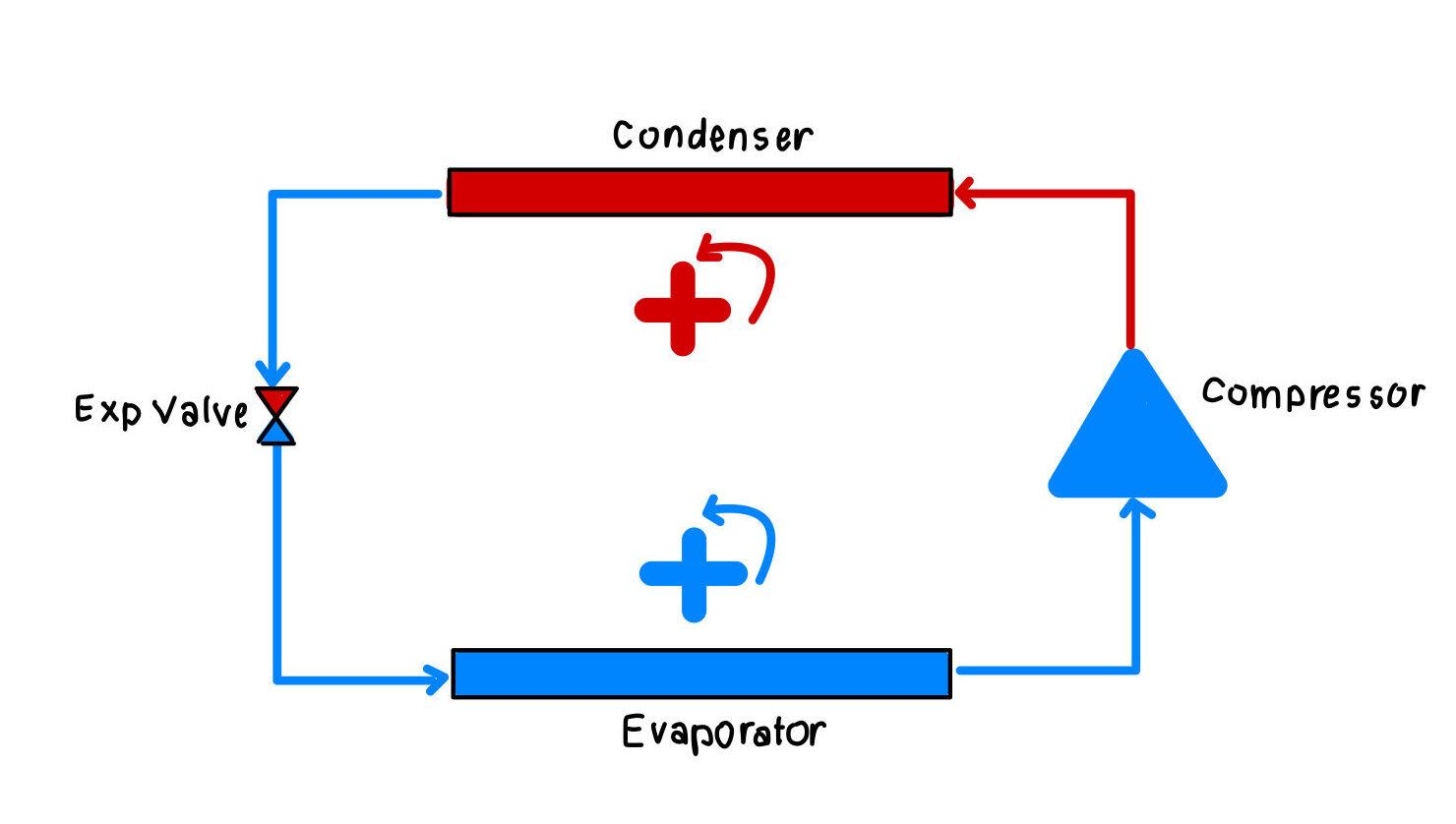
Here is a general overview of how HVAC systems work:
- Heating: component of an HVAC system is typically provided by a furnace, boiler, or heat pump. The system uses fuel or electricity to generate heat, which is distributed throughout the building using ducts or pipes.
- Ventilation: component of an HVAC system is responsible for introducing fresh air into the building and removing stale air. It helps maintain healthy indoor air quality by removing pollutants and excess moisture from the air.
- Air Conditioning: component of an HVAC system is responsible for cooling the indoor environment. It typically uses a compressor and refrigerant to remove heat from the air, which is then distributed throughout the building using ducts or pipes.
- Thermostat: is the control center of the HVAC system. It allows users to set the desired temperature and humidity levels, and it regulates the operation of the heating and cooling components.
- Ducts and Vents: are used to distribute heated or cooled air throughout the building. They help maintain consistent indoor temperatures and improve air quality by removing pollutants and excess moisture.
The major parts of the system are often packaged together in a Window Type AC or Roof Top Unit (RTU), separated like split systems, or using special heat exchangers with secondary water circuits similar to chilled water systems.
Energy Consumption in HVAC Systems
Like all thermodynamic gas / vapor power cycles, the refrigeration cycle shown in (Figure 1) contains some energy consuming components that enable its continuous operation, and hence the production of useful energy (heating / cooling). These include:
- Compressors
- Fans
- Pumps (in the case of a chilled water system)
- Controls
The typical energy consumption contribution for each of these parts is illustrated below:
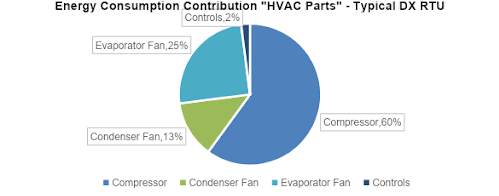
Since majority of the energy consumed by a refrigerant-based HVAC system is related to the compressor(s), HVAC systems manufacturers are constantly competing to improve their compressor technology, in an effort to comply and exceed current energy consumption regulations.
HVAC System Efficiency
The overall efficiency of any HVAC system depends on many factors, such as:
- Outdoor temperature profile
- Indoor temperature profile (user / application dependent)
- Building envelope (insulation / infiltration)
- Lighting systems heat emission
- Occupancy and level of activity
- Internal equipment heat emission
- Internal latent load sources
- The efficiency of HVAC system components
One of the best ways to distinguish one refrigerant-based HVAC system over another is its energy efficiency ratio (EER), calculated using the following formula:

BTU: British Thermal Units (BTU) per hour
Wh: Watts per hour
Higher EER values indicate a more efficient system. Typical values of efficient HVAC cooling systems range from 10 to 12 (unitless), indicating an average of 10 to 12 units of cooling effect per unit of electrical energy input.
Now, it may seem that this principle is violating the First Law of Thermodynamics concerning the Law of Energy Conservation, however, it is not. Let’s use the following example to clarify that concept. Assume there is some spilled water over a desk and we need to collect that water in a bowl. One might use a spoon to collect the water into the bowl. While another might use a sponge that absorbs the water from the desk. While both methods would have completed the task, using the sponge required significantly less effort.
Similarly, a refrigerant at low pressure / low temperature plays a similar role to the sponge in the previous example. The refrigerant removes heat from your space (sponge), pushing the heat towards the compressor (hands applying a light pressure to squeeze the sponge), enabling that heat-loaded refrigerant to release its heat to the atmosphere through the condenser.
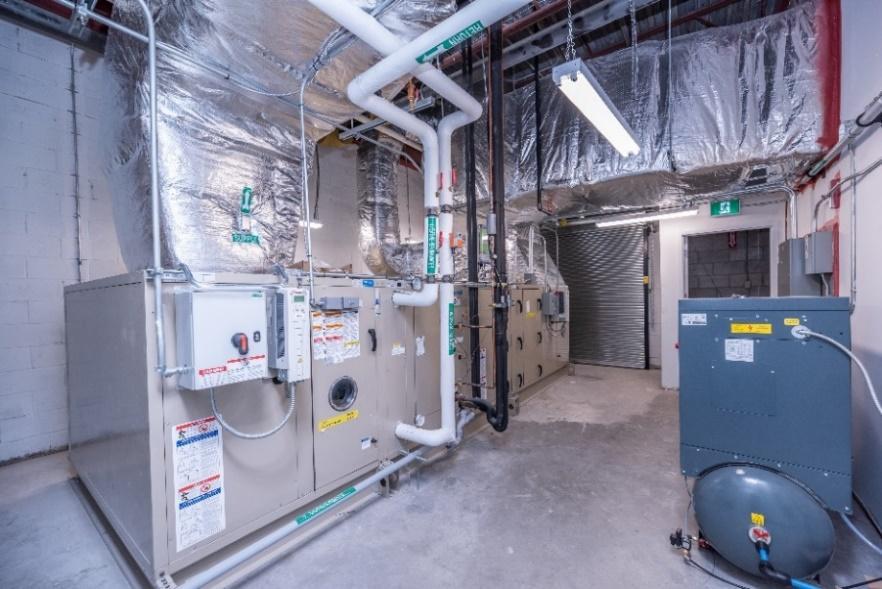
Currently, seasonal energy efficiency ratio (SEER) is also being used to evaluate and compare the seasonal energy efficiency of air conditioning units, which addresses the ratio between the total useful energy (cooling or heating) and the total energy consumption for the same season or period of time. (Refer to AHRI related standards for more information)
Such values (EER / SEER), and any other similar values (ESEER , SCOP) help us compare the overall efficiency of the Air Conditioning Unit, however, an overall evaluation of the HVAC system efficiency involving other system components, such as fans and pumps, is still required by a professional HVAC engineer.
HVAC Systems in Cleanrooms
While HVAC system designs depend heavily on the required cleanroom classification according to ISO 14644-1 standards (Air Change Number per hour (ACH), refer to Figure 3), thermal loads need to be addressed in early stages of the project, taking into consideration all internal and external heat sources. It is also important to understand that thermal load calculation is not only needed for equipment selection, but it is also required to understand load fluctuations, hence requiring one to choose the most feasible HVAC system from an initial cost as well as operational cost point of view.

Thermal Load Fluctuations
To evaluate a cleanroom HVAC system from an energy efficiency perspective, we need to understand its thermal load fluctuation, which depends on many factors such as:
- At Rest schedule vs. Operational schedule
- Thermal behavior of internal loads (i.e. equipment, processes)
- Surrounding environment thermal behavior
- Ambient thermal behavior
A thermal load behavior for collective components may look as shown below:
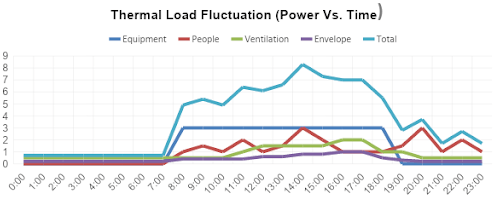
Choosing an appropriate HVAC system of the right size and function that responds to load fluctuations will prevent intital and running cost losses.
The following tips can be considered to optimize energy consumption of cleanroom HVAC systems:
- Consider the height of the controlled environment room before equipment selection, and check for height reduction possibilities (every foot counts!)
- The use of variable air volume systems through considering variable frequency drive (VFD) fans and Variable Air Volume controls (VAV’s)
- The use of efficient air conditioning units that complies with ASHRAE 90.1, corresponding AHRI standards and current ENERGY STAR regulations through utilizing VFD drive compressors and fans
- Considering Computational Fluid Dynamics simulation for further design optimization (Figure 6).
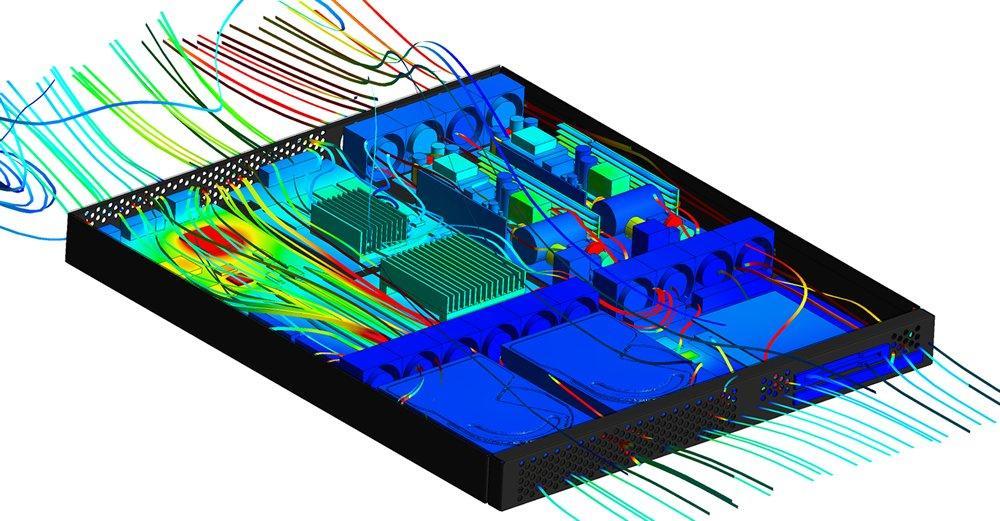
The engagement of a professional controlled environment / cleanroom service provider from early design stages helps making effective decisions that lead to optimized design and selection.
HVAC Systems at ACH (A Cleanroom Hub)
We at ACH Engineering are proud to provide comprehensive evaluations of your controlled environment / cleanroom application, including HVAC systems evaluation through:
- Thermal load calculation and evaluation
- HVAC system design
- HVAC system selection
- Energy cost evaluation
ACH Engineering is a controlled environment and cleanroom solutions provider that attends your project from early design stages and up to certification by providing the following holistic products and services:
- Engineering & Design:
- We provide comprehensive engineering and design services for your controlled environment and cleanroom application from Architectural, Structural and MEP perspectives and according to local applicable codes and regulatory requirements.
- Manufacture & Supply
- Our cGMP modular room panels, ceilings, doors, and vision panels are manufactured to satisfy the corresponding requirements of the most stringent standards (FDA, cGMP, and Health Canada).
- Manage & Execute
- Our teams are ready to turn design documents and drawings into materialized operational fact through utilizing their construction project management expertise.
- Validate
- Validating our projects to be certified is the organic result of the providing seamless and professional service throughout the complete value chain.
FAQs – Controlled Environment / Cleanroom HVAC Systems
1. Do I need an HVAC System for my Cleanroom?
An HVAC System is the heart of any cleanroom. While changing the indoor air at certain exchange rate (ACH) is necessary to achieve the required particle contamination level according to ISO 14644-1, maintaining proper temperature and humidity is also necessary for process integrity and people health and safety.
2. Who can do the HVAC design and installation for a cleanroom?
Developing a proper HVAC design for cleanroom applications requires special knowledge and expertise. Designing is developed by a professional engineer who is licensed by a regulatory body (i.e. Professional Engineers of Ontario), while installation is done through experienced mechanical contractors preferably under professional supervision from controlled environment / cleanroom solutions provider.
3. What is the importance of having a professional HVAC system design / installation for my controlled environment / cleanroom application?
HVAC system design & installation is critical for controlled environments / cleanroom applications due to its vital impact on internal process integrity, processes taking place in controlled environments and cleanrooms that are related to human health, research and development, delicate manufacturing processes and more!
4. What is the difference between a controlled environment and a cleanroom?
A controlled environment, or a critical environment, refers to a space with controlled temperature, pressure, and humidity, without referring to particle contamination.
According to ISO 14644-1, a cleanroom is a room within which the number concentration of airborne particles is controlled and classified, and which is DESIGNED, CONSTRUCTED and CERTIFIED in a manner to control the introduction, generation, and retention of particles inside the room, while other elements might need to be controlled such as temperature, pressure, electrostatic discharge, vibration, lighting and humidity.
Therefore, a cleanroom is a more stringent version of a controlled environment.
5. What are the ideal conditions of a cleanroom?
Cleanrooms can be classified according to the required indoor particle number per unit volume as per (ISO 14644-1), while the following tests shall be done to maintain the classification:
- Particles per cu.mt volume
- HEPA / ULPA filter leak test
- Room pressurization test
- Room air change per hour (ACH)
GET IN TOUCH
Complete the form below to get in touch with our team.
